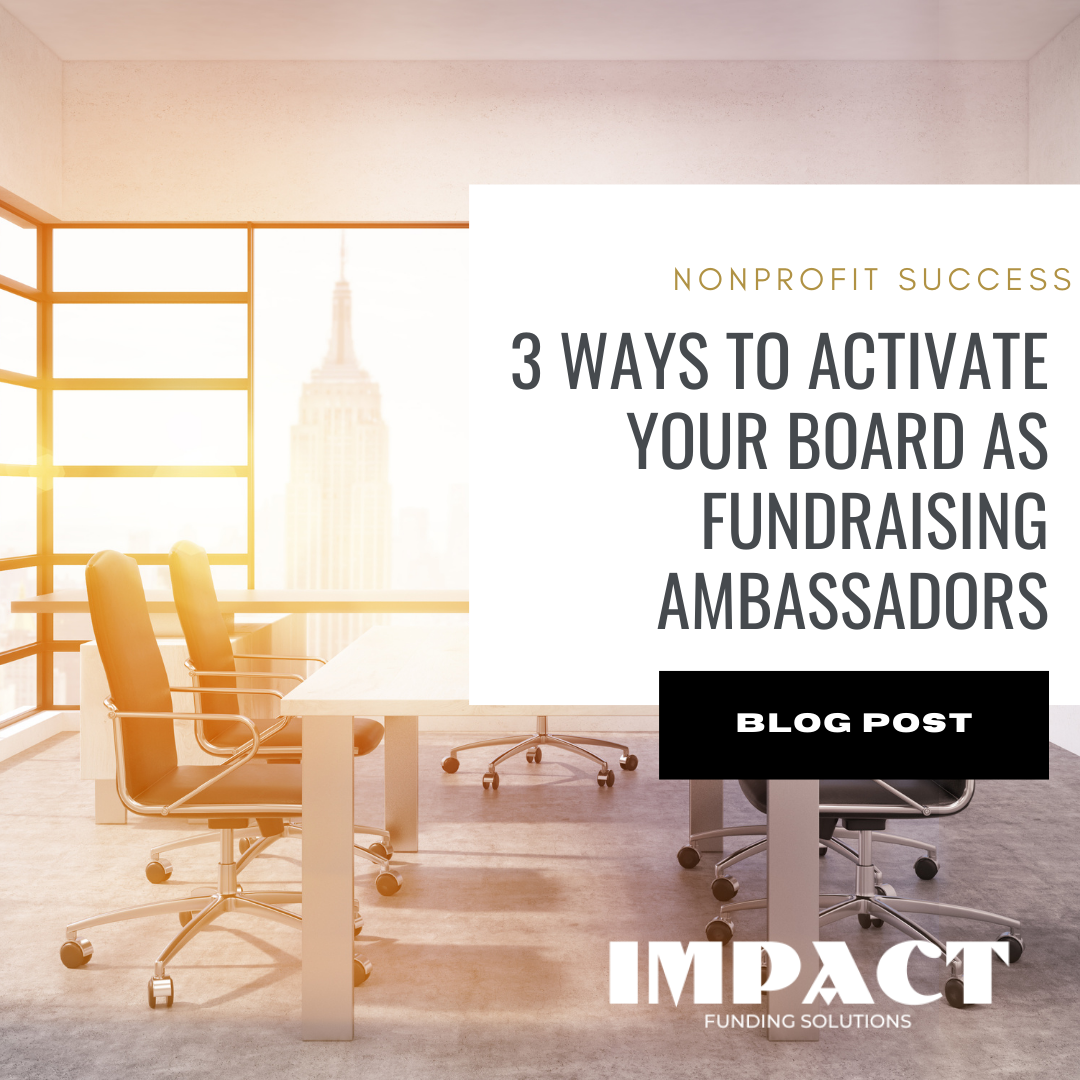3 Ways to Activate Your Board as Fundraising Ambassadors

3 Ways to Activate Your Board as Fundraising Ambassadors
For many nonprofit leaders, getting their board involved in fundraising feels like pulling teeth. You’re not alone. In fact, one of the most common frustrations we hear is: “We have a great board, but they just aren’t helping with fundraising.”
Here’s the truth: your board doesn’t need to become full-time fundraisers. But they do need to understand their role in supporting your organization’s financial sustainability—and that includes fundraising in some capacity. Whether through relationships, visibility, or direct giving, there are meaningful ways board members can help.
💛70% of nonprofits report that engaging their board in fundraising is a significant challenge.
💛On average, 74% of nonprofit boards have members who personally donate to the organization. However, only 46% of boards achieve 100% member giving.
💛A 100% board giving rate is often viewed favorably by funders and can enhance the credibility of the organization during grant applications.
💛68% of nonprofit organizations require their board members to make annual personal donations, with 40% suggesting a minimum annual contribution.
💛Approximately 10% of total giving received by organizations comes from board members, highlighting the potential impact of active board participation in fundraising efforts.
Here are 3 Ways to Activate your Board of Directors as Fundraising Ambassadors:
1. Give Them Clarity, Not Guilt
The #1 reason board members don’t participate in fundraising? They don’t know what’s expected—or they’re afraid they’ll be asked to make cold calls or ask friends for money.
Instead, give them clear expectations and options. Define what “fundraising support” looks like for your organization. This might include:
- Making a personal donation (100% board giving shows funders you’re serious)
- Introducing their network to the mission
- Hosting or attending events
- Thanking donors
- Sharing campaigns on social media
The key is to make fundraising feel approachable, specific, and aligned with their strengths.
2. Equip Them With the Right Tools
Don’t assume board members know how to talk about your impact. Give them talking points, elevator pitches, and success stories they can easily share.
Consider creating a short “Board Fundraising Toolkit” that includes:
- A one-pager about your mission and current funding needs
- Sample language for emails or social media
- Your donation page link and campaign calendar
- A list of upcoming events they can help promote
Confidence comes from preparation—and when you provide the right tools, most board members will step up.
3. Celebrate and Recognize Their Contributions
Board members are more likely to stay engaged when they feel appreciated. Publicly thank them for their support. Highlight their impact in newsletters or at events. Share stories about how their introductions or donations made a real difference.
Recognition is a powerful motivator—especially for volunteers giving their time and energy behind the scenes.
Final Thoughts
Your board doesn’t need to be made up of professional fundraisers. But every member can—and should—play a role in supporting your mission financially. With the right expectations, tools, and encouragement, your board can become one of your strongest fundraising assets.
Do you have any questions or need any support with any fundraising topics or grant writing? We can help! CONTACT US TODAY
related article from DonorPerfect:

